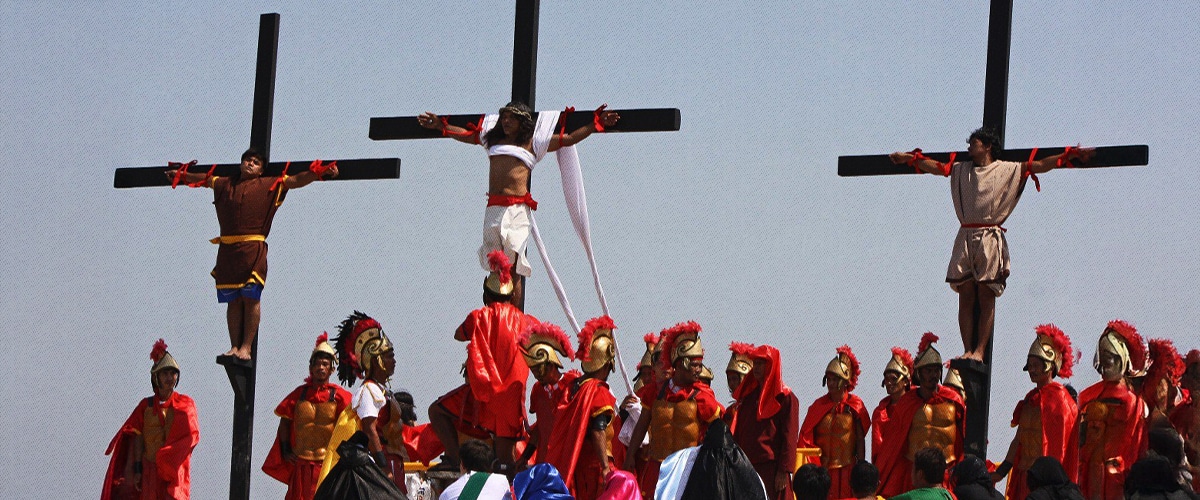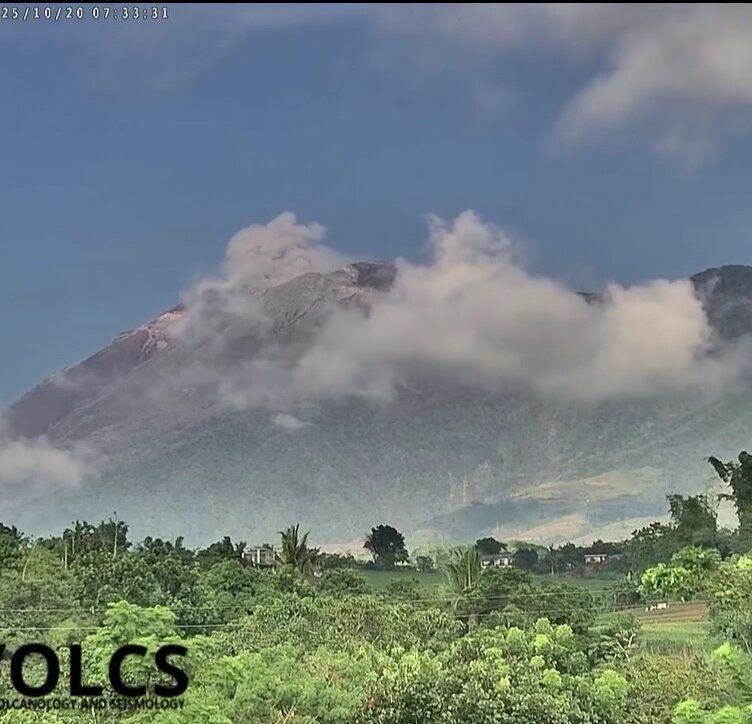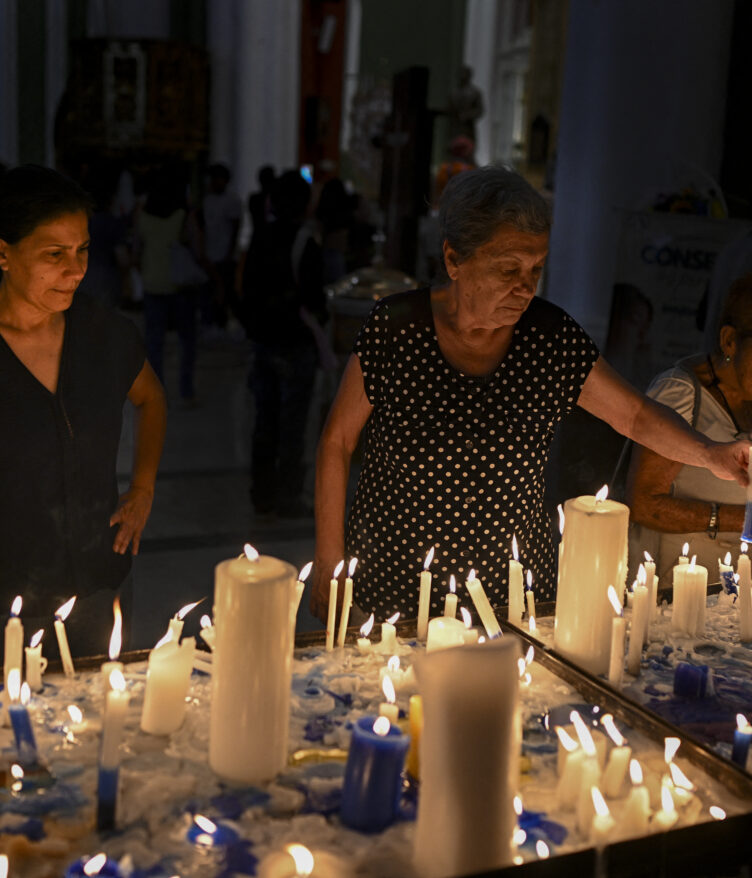ON a blistering afternoon in Pampanga, the streets are filled with the quiet murmur of prayers, the rustle of leaves, and the dull thud of whips striking bare skin.
A man walks barefoot, his back bloodied from relentless self-flagellation. At the end of the procession, he is hoisted onto a wooden cross, nails driven through his palms and feet.
To outsiders, the scene might look like something out of a horror film — a grotesque relic of religious fanaticism in a country that seems unable to break free from its traditions.
But to many Filipinos, this ritual is an act of their devotion, a sacred offering of pain to a God who they believe understands suffering because He, too, endured it.
Catholicism in the Philippines is often described as a scar— a mark left by centuries of Spanish colonization. With the abuses recorded by history, it is easy to view these forms of worship as remnants of that trauma.
But to stop there is to miss a deeper truth— the faith that was once imposed has long since been transformed.
Catholicism in the Philippines is not merely a colonial legacy, but a living example of cultural reclamation — a fusion of imposed beliefs and indigenous spirituality, molded through time and meaning.
One such example is ‘penitensya’, a Lenten tradition that may appear violent or archaic on the surface, but in reality, reflects a uniquely Filipino way of understanding God, suffering, and salvation.
Folk Catholicism
From a nationalist’s point of view, it is easy to dismiss the practice of ‘penitensya’ as nothing more than a lingering shadow of colonization. In fact, this perspective extends not only to the tradition itself but even to the entirety of Catholicism in the Philippines.
“Ang common kasi na misinterpretation was that Christianity was used for colonization of the Philippines, para masakop tayo, and so on and so forth,” explained Professor Jose Victor Torres, an author and professor from the esteemed history department of De La Salle University – Manila.
“This kind of understanding came out especially nung quincentennial natin. If you remember, we celebrated 500 years of Christianity in the Philippines. There were a lot of people asking, why are we celebrating something that was brought to us by colonial powers? Bakit natin sine-celebrate ito?” he said.
This line of thought stems from a historical narrative that often emphasizes the darker aspects of colonial history. From forced conversions to demonization of native beliefs, the spread of Catholicism was always intricately tied to the mechanisms of control and exploitations by Spanish colonizers.
While this is true, Professor Torres insisted that it overlooked a critical nuance.
“Ang sinasagot naman namin ngayon dyan is, kung galing talaga ito sa colonial power, bakit hanggang ngayon Kristiyano pa rin tayo? Diba? Why is it until today [we’re still Catholic]?”
He noted that even though other influences made their way to the Philippines — such as Protestantism brought by the Americans, the Iglesia Ni Cristo which originated within the country, and the Aglipayan Church — the majority of Filipinos still remained largely Catholic.
“Ano’ng masasabi natin dyan? It is because we made the Christianity that was brought to us by the friars ‘us’— ours,” said Professor Torres.
What he meant by this is that, over time, we integrated Catholic practices with elements of our own traditions — some of which trace back to the precolonial era:
“Ginawa nating kultura natin. And this kind of culture entered our everyday system and became a part of us Filipinos. Somehow, we consistently adapted it and made it our own,” he said.
Professor Torres explained that while Filipinos are Catholics, the Catholicism practiced in the Philippines is distinct from its European roots because we’ve added our own unique flair to it.
This is what we refer to as Folk Catholicism.
“Even though it’s still Catholicism, there are some things that are not recognized by the church,” described Professor Torres.
A quick review of academic journals and studies defines Folk Catholicism as a deeply personal and often communal expression of faith that extends beyond the formal rituals of the Catholic Church.
This includes practices like devotion to local saints or the belief in anting-anting (charms and amulets) for protection—manifestations that blend indigenous spirituality with Catholic doctrine.
Folk Catholicism isn’t unique to the Philippines. It’s a phenomenon also found in other formerly colonized nations, particularly in Latin America.
In Argentina, for instance, many venerate Gauchito Gil—a folk saint not officially recognized by the Catholic Church. In Mexico, the widely celebrated Día de los Muertos fuses Catholic observances with pre-Columbian rituals that honor the dead, reflecting a similar cultural synthesis born from colonization.
Penitence, Flagellation, and Crucifixion
Colonized people took the towering weight of Catholicism and carved it into something of their own.
In the Philippines, this transformation is most vividly etched in our Catholic traditions, including those we practice during the Lenten season.
Here, ‘penitensya’ is more than just a ritual. It is theater, prayer, and history colliding in one raw, visceral spectacle— a cultural synthesis where faith becomes offering and is written on flesh.
“Actually, the practice of penitensya… it started actually [sa] Spanish period kasi this was the time na inculcated na sa ‘tin ‘yung Catholic religion. And of course, ‘yung introduction ng other aspects ng religion,” said Professor Torres.
He added that by the time the Americans arrived in the country, most traditions of the Lenten season were already being widely practiced by Filipinos.
“Kasi there are photographs of American visitors here in the Philippines during the [American] colonial period who have taken photographs of the penitence, of the flagellants in several of the provinces,” he said.
“So hindi natin masasabi talaga na it’s a modern influence. Kung hindi, ito ay… it really began in the Spanish period. And especially at the time, naging bahagi na talaga sa pamumuhay natin ‘yung Lenten season.”
The practice of penitence and self-flagellation appears to be an inheritance from the Spaniards, as Professor Torres noted that historical records show similar acts of self-flagellation taking place in Spain.
But the act of actual crucifixion—nails driven through hands and feet, bodies hoisted onto wooden crosses—is a striking evolution that is uniquely Filipino.
“The imitation of the crucifixion wala eh [record in other countries]. Flagellation lang,” said Professor Torres.
“Pero ‘yung crucifixion— as far as I know— wala tayong record na in-adapt na European tradition of crucifixion.”
Crucifixion is a Lenten tradition in the Philippines, where devotees are voluntarily nailed to the wooden crosses as part of their panata or solemn vow. It is most notably done in the province of Pampanga, particularly in Angeles and San Pedro Cutud.
It is not sanctioned by the Catholic Church. As a matter of fact, Church officials discourage it.
“Sa ‘tin, that’s part of Folk Catholicism,” said Professor Torres.
“The Catholic Church condemns it. Sabi nila, hindi naman daw tama ‘yan. Even the flagellation is already being condemned— not condemned but the church say ‘wag masyado. Puwede naman kayong magdasal, hindi naman kailangang sugatan ang sarili. But hindi tayo nakikinig kasi we made it part of ourselves.”
But the act of imitating Christ’s crucifixion is not the only thing Filipinos made their own. Many other Lenten practices and duties have deep roots in local customs and beliefs.
“For example, when I was a reporter in the 1980s, I documented a lenten tradition that ang tawag nila is ‘pagtatabag’,” recalled Professor Torres.
‘Pagtatabag’ is the act performed by a designated person who strikes the back of penitents with a paddle containing broken glass, intensifying the flagellation ritual during Lent.
“He had this instrument… maliit siyang palo-palo,” said Professor Torres. “It’s a small paddle that on one surface is broken glass. Ta’s whenever the flagellant daw would start his flagellation on the way, dadaan siya muna do’n sa magtatabag.”
You can also check: VDay vs Ash Wednesday: Indulge or sacrifice?
‘Panata’, Suffering, and the Filipinos Understanding of God
This compartmentalized duty can also act as a ‘panata’, especially for the person doing the chore.
And ‘panata’, in itself, is another unique aspect of the Filipino faith.
“Now, are our panatas uniquely Filipino? In a sense, yes. Kasi ang lalim ng [tingin] natin sa panata. It boils down to our native tradition,” explained Professor Torres.
He related it to the Filipinos’ understanding of God. He said that when the friars taught us about God, they made him look like someone who is above us. They made the concept of God as a person of authority.
But the Filipinos’ understanding of God soon evolved. As we began to view God as a source of salvation, we started to reflect our own lived experiences onto Him, making His presence more relatable and resonant with our lives.
“Unang-una, you have to look at our understanding of God. Our understanding of God is that God is all forgiving. Wala naman tayong kultura na kapag may ginawa kang masama, tatamaan ka ng kidlat ng Diyos eh. Wala naman tayong gano’n,” said Professor Torres.
From this belief, we began to find ways in which to gain His forgiveness. Our traditions began to form.
“Our concept of God is a forgiving God. So whenever we do something bad or evil, we will always go to a priest and confess and everything, and so on and so forth. And we expect to be forgiven in return,” he said.
“Ang sinasabi natin, kapag gumawa tayo ng masama, patatawarin tayo ng Diyos. Pero in exchange, ano’ng gagawin natin? Kailangang mag-alay sa Diyos, magdasal sa Diyos, and everything.”
During the Lenten season, the practice of imitating Christ becomes a way for Filipinos to demonstrate their trust in God. By mirroring Christ’s suffering, they believe that whatever happens, they will be rewarded for their faith.
Professor Torres further explains that the Lenten traditions in the Philippines are rooted in panata, or vows, which are deeply personal promises that individuals make. These vows are often linked to something they wish to receive from God or something they feel compelled to offer in return.
Read: Traslación as the Filipinos’ resistance against colonial oppression
Nuances of ‘Penitensya’ in the Philippines
Just as local culture shaped the way we practiced Catholicism and ‘penitensya’, it’s equally fascinating to see how these practices vary across different regions within the Philippines, each reflecting unique cultural nuances.
When asked why ‘penitensya’ practices seemed more rampant in the Northern and Central part of Luzon, Professor Torres theorized that it might have something to do with the people’s environment.
For instance, such intense displays of penance are not as common in Ilocos, but they are deeply rooted in Central Luzon. He explains that this may be because Central Luzon is the country’s agricultural heartland—often referred to as the “food basket” of the Philippines.
In a region where people rely heavily on farming and nature’s bounty, traditions centered on sacrifice and offering have become more prominent, reflecting a cultural emphasis on giving something up in hopes of blessings or abundance in return.
Meanwhile, in the Visayas, where harvests are generally more abundant and reliable, practices of penance are less common. Instead, their Lenten traditions tend to be more celebratory—featuring rituals with songs and dances that reflect gratitude and prosperity rather than sacrifice.
The Filipino Faith
With everything we’ve uncovered about Folk Catholicism, one thing is clear: Filipino faith is not a fossil of the past. It is not just a product of colonization or proof that we’ve failed to modernize.
It’s deeper than that—layered with memory, history, and meaning. It is personal and collective. Imposed, yes, but also reclaimed.
As Professor Torres puts it:
“First and foremost, you must recognize our identity and what we have that made it our identity before condemning colonialism. ‘Yan ang mga nae-encounter namin. This idea that the Catholic religion was a colonial tool. For a nationalistic kind of thinking, yes it is.”
But here’s the truth—
“You cannot remove the fact that it became part of your identity.”
How useful was this post?
Click on a star to rate it!
Average rating 5 / 5. Vote count: 1
No votes so far! Be the first to rate this post.
We are sorry that this post was not useful for you!
Let us improve this post!
Tell us how we can improve this post?








